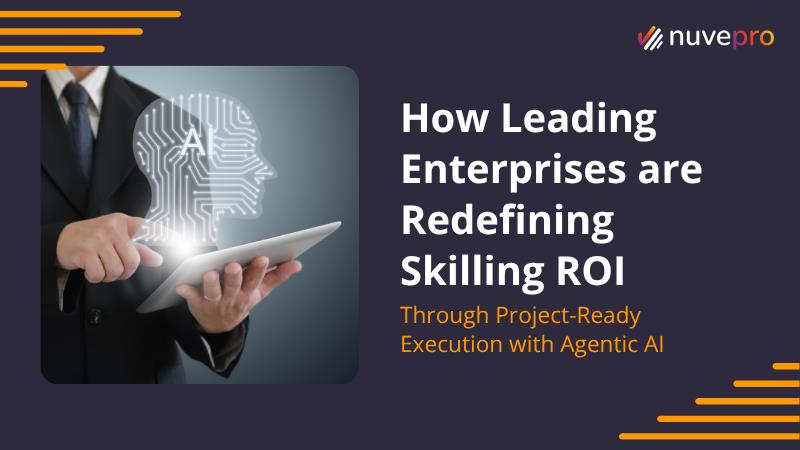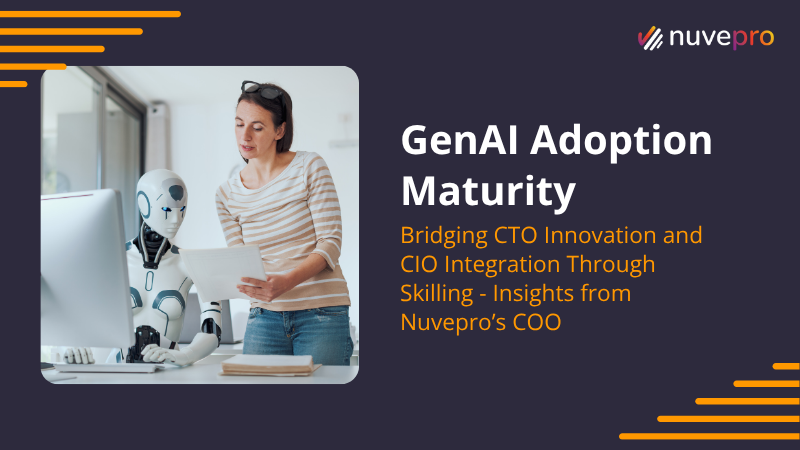Welcome to the future of education, where the traditional model of rote memorization and endless hours in the classroom is being left behind. In a world that demands practical skills and real-world problem-solving, it’s time to embrace a new approach: skills-based education.
Gone are the days when grades and hours spent studying were the sole measures of success. Today, employers seek individuals who can hit the ground running, equipped with hands-on experience and the ability to apply their knowledge to real-life situations. It’s time to shift our focus from passive learning to active engagement, from theory to practice.
Enter hands-on learning, the catalyst for a transformative educational journey. By immersing students in dynamic environments such as hands-on labs and project-based activities, we unlock their full potential and foster a deeper understanding of the subject matter. Gone are the days of merely regurgitating facts from textbooks. Instead, students actively engage with the material, honing their critical thinking, problem-solving, and collaboration skills.
Why are hands-on labs and hands-on experiences so vital in this new paradigm?
Simple. They bridge the gap between theory and application, giving students a taste of what awaits them in the real world. By working on practical assignments and tackling real-world challenges, students gain invaluable insights and develop the confidence needed to excel in their future careers.
Moreover, skill outcomes are becoming the new measure of success. It’s no longer enough to graduate with a stellar GPA; employers want to see tangible evidence of your abilities. Skills-based education empowers students to acquire specific competencies that make them job-ready from day one.
In the realm of reskilling, hands-on labs play a crucial role. As industries evolve and technologies advance, professionals must constantly upgrade their skill sets to remain competitive. Labs for reskilling offer targeted training opportunities, enabling individuals to acquire new proficiencies and transition smoothly into emerging fields. With hands-on training tailored to meet industry demands, professionals can embark on new career paths with confidence.
The world is craving graduates who are not only job-ready but also project-ready. Employers are increasingly valuing candidates who can demonstrate their ability to tackle complex projects, from ideation to execution. By incorporating project-based learning into the curriculum, educational institutions empower students to develop an entrepreneurial mindset, fostering creativity, problem-solving, and resilience.
In this hands-on approach, students don’t just find answers; they create solutions. By actively engaging in their learning journey, they learn to think critically, approach challenges with an open mind, and collaborate effectively with their peers. These essential skills are the bedrock of innovation and entrepreneurship, driving positive change in our rapidly evolving world.
The Power of Hands-On Learning: Unleashing Potential Through Hands-On Labs and Projects
Gone are the days of passive learning and theoretical memorization. Nuvepro’s hands-on labs provide students with immersive experiences that bring concepts to life. Through interactive activities, experiments, and real-world simulations, students actively engage with the material, unlocking their full potential. Research has shown that hands-on learning not only enhances understanding but also fosters critical thinking, problem-solving, and collaboration skills essential for success.
At Nuvepro, hands-on learning is not just about acquiring knowledge; it’s about building skills. Skill bundles are carefully designed to align with industry requirements, ensuring that students graduate not only with theoretical knowledge but also with the practical skills that make them job-ready.
Moving Beyond Traditional Metrics: Skill Outcomes as the New Measure of Success
In today’s competitive job market, traditional metrics like grades and hours spent studying are no longer sufficient. Employers demand tangible proof of a candidate’s capabilities. Nuvepro understands this shift, and that’s why skill outcomes take centre stage. By focusing on skill development, Nuvepro empowers learners to showcase their practical abilities and demonstrate their readiness to tackle real-world challenges.
Nuvepro’s hands-on labs play a vital role in nurturing skill outcomes. Through experiential learning and active problem-solving, learners develop a diverse set of competencies that are highly valued by employers. These skill outcomes become the new currency of success, providing a comprehensive picture of a learner’s skills and setting them apart from the competition.
Labs for Reskilling: Bridging the Gap Between Education and Industry Needs
The digital age has brought forth rapid technological advancements, leading to an increased demand for reskilling. Nuvepro’s hands-on labs address this need by offering targeted training programs that bridge the gap between education and industry requirements. These labs provide professionals with the opportunity to acquire new skills and adapt to emerging trends, ensuring their continued relevance in the job market.
By focusing on skill bundles specifically designed for reskilling, Nuvepro equips individuals with the precise competencies needed to thrive in a changing landscape. Hands-on labs serve as the catalyst for transformation, enabling professionals to reinvent themselves and successfully transition into new roles and industries.
From Classrooms to Careers: Creating Job-Ready Graduates Through Hands-On Training
The transition from classrooms to careers can often be daunting for graduates. Nuvepro understands the importance of practical experience in bridging this gap. Through hands-on training, Nuvepro equips students with the real-world skills necessary to excel in their chosen professions. By immersing students in simulated work environments and providing hands-on solutions, Nuvepro ensures that graduates are not only academically proficient but also job-ready from day one.
Hands-on training offered by Nuvepro goes beyond textbook knowledge, empowering students with the ability to apply theory to real-life scenarios. This practical experience fosters confidence, adaptability, and problem-solving capabilities, setting graduates apart as valuable assets in the job market.
Closing words: Embrace skills-based education for a future of success.
As we step into the future, it’s clear that traditional education models are no longer enough to prepare students for the challenges and opportunities that lie ahead. In this blog post, we have explored the innovative approach of Nuvepro’s hands-on labs and how they are shaping the landscape of education in 2023 and beyond.
Let’s recap the key points and why embracing skills-based education is crucial for future success.
- Nuvepro’s hands-on labs transform education into an active and immersive experience, unleashing the power of hands-on learning.
- Through engaging activities and real-world simulations, students develop critical skills such as problem-solving, collaboration, and adaptability.
- Hands-on learning equips students with the practical expertise they need to thrive in a rapidly evolving world.
- Skill outcomes have become the new measure of success, and Nuvepro prioritises skill bundles tailored to industry needs.
- Skill bundles encompass technical expertise and essential soft skills, making students job-ready from day one .
- Labs for reskilling offered by Nuvepro bridge the gap between education and industry needs.
- Targeted training programs enable professionals to acquire the new skills required in emerging fields.
- Nuvepro’s hands-on training programs facilitate the transition from classrooms to careers, providing real-world experience and practical solutions.
- Practical skills acquired through hands-on training make graduates valuable assets in the job market.
- Project readiness is essential, and Nuvepro’s hands-on labs empower students with real-world problem-solving skills.
- By working on projects that mirror industry challenges, students develop critical thinking, creativity, and collaboration abilities.
- The fusion of classroom education and on-the-job learning enables students to apply theoretical knowledge in real-world settings.
- Nuvepro’s approach fosters a seamless transition into professional roles.
These points highlight the transformative impact of Nuvepro’s hands-on labs, the importance of skill outcomes, and the value of practical experience and project readiness in education and career development.




